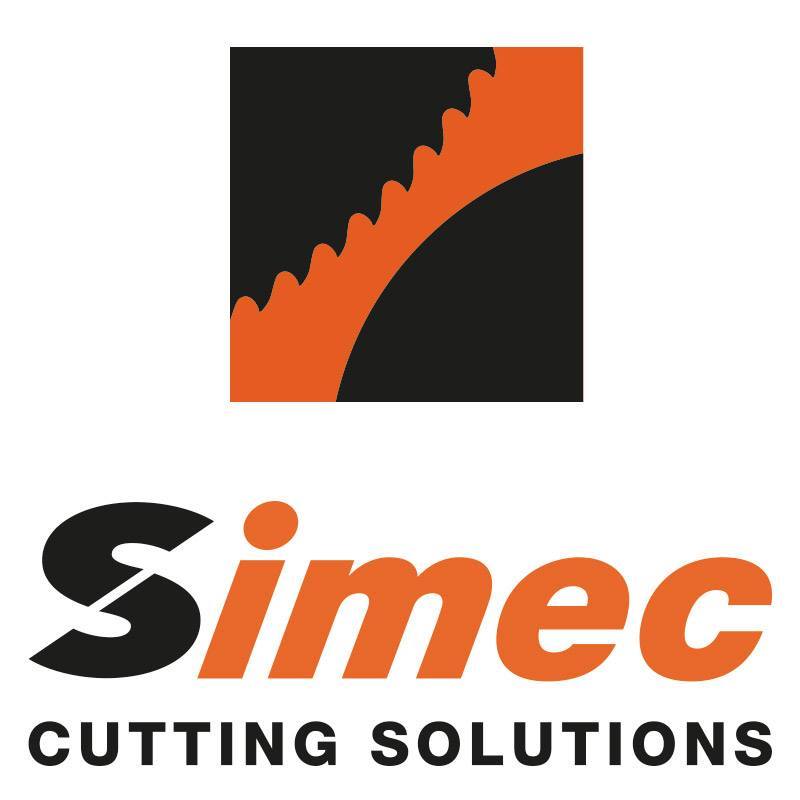Bandsaws For Fabricators: A Complete Guide
Bandsaws for fabrication are vital tools that serve many diverse industries. They enable fabricators and engineers to manufacture a wide range of components, from high volume batches to customised, three-dimensional profiles.
Bandsaw machines can be used to cut a variety of materials, making them some of the most versatile pieces of equipment in modern manufacturing. They can also be equipped with a range of highly effective bandsaw blades, providing cutting solutions for every aspect of fabrication manufacture.
Bandsaws For A Range Of Fabrications
Click on this text to edit it.
Fabrications and Industry
Bandsaws and the fabrications they produce are essential within almost every industry. When processing timber, they provide structural components for the construction industry and interior design. Alternative products could be high volume fence panels, chairs and flooring. Wood cutting bandsaws can also be used for decorative carpentry such as fretwork.
In metal cutting, bandsaws are essential for manufacturing components used in all types of transport including ships, trains and bicycles. Metal fabrications are used in farm machinery and household appliances. They create structural beams for the construction industry and the automated systems used in manufacturing. Metal cutting bandsaws can even help to produce intricate components for surgical equipment and power tools. The versatility of the bandsaw frequently encourages innovative designs throughout all types of industries.
Fabrication Techniques
Fabricators use a wide range of techniques when manufacturing components. Lengths of wood may be shaped on a lathe to a specific design before being trimmed, drilled or assembled. Bandsaws for wood may be used to shape and cut timber to length before or after other processes are employed. They are also capable of producing intricate scrollwork and thin, shaped veneers for decorative marquetry.
Metal sheets may be bent to shape, folded, or punched with a die. Occasionally, pieces are stamped to form a textured surface. Casting involves pouring molten metal into a die to form a complex three-dimensional profile. Cutting metal with a bandsaw is an essential part of many such industrialised processes. A bandsaw may be used to cut lengths of raw metal prior to forming or stamping.
Alternatively, bandsaw cutting may be one of the last processes in the sequence. A bandsaw may cut to length complex structural shapes such as H-beams, or be required to slice pre-formed metal bars at specific angles. Many components simply couldn't be produced efficiently without the services of a bandsaw.
Bandsaws For Different Types of Materials
Timber - Wood cutting bandsaws can effortlessly cut through softwood such as pine, Douglas fir and cedar. Alternatively, hardwoods including oak, walnut and ash respond well to the different cutting speeds of our bandsaw machines.
Carbon Steel - As one of the most common metals, carbon steel has many levels of hardness depending on the ratio of iron and carbon. It has a high tensile strength, making it suitable for fabrications destined for load-bearing and intense wear, and it’s essential to use the right bandsaw and blade for clean cutting.
Stainless Steel - When fabrications require a high resistance to corrosion, they are often manufactured from stainless steel. It includes carbon steel blended with at least 10.5% chromium. There are several alloys, including grade 304 that's suitable for fabrications in food usage.
Cast Iron - This tough, resilient metal has greater compression strength than carbon steel. It generally has low malleability, but can easily be cut with a bandsaw blade. Cast iron fabrications are often used for a range of purposes, from heavyweight machinery to cookware.
Copper - This relatively soft metal can be used for many applications including pipework, wiring and heat exchangers. It performs well within electrical circuits and in marine locations.
Brass - An alloy of copper and zinc, brass has a great resilience to moisture and corrosion. It is commonly used for locks, pipes and plumbing.
Aluminium - As one of the lightest, most malleable metals, aluminium is frequently in high demand. It is an efficient heat conductor and often used in the aerospace industry, electronics and for general manufacturing.
Titanium - This metal has the strength of steel with around half its weight. It is often used for high performance fabrications such as bicycle frames and surgical equipment.
Plastic - Polymer resins are usually heated until molten then poured into moulds. The resulting fabrications can include complex three-dimensional profiles. These can be trimmed with a bandsaw to create a multitude of items such as window frames and connectors for shelving.
Rubber - This material has many densities and usages from upholstery foam to car tyres. When using the most suitable bandsaw blade, rubber can be cut or shaped with incredible speed and accuracy.
Choosing the Best Bandsaw for Fabrication
At Saws UK, we offer an exclusive range of high-quality bandsaws manufactured by many innovative brands. Some of the best cutting machines for manufacturing fabrications offer versatile features that help the process remain swift and efficient.
Manoeuvrability is important, particularly when processing batches of components. Our extensive selection of bandsaw machines usually includes useful fabrication features. For instance, a cast iron bow and vice provides reliable stability, while a smooth-running swivel table ensures work can be positioned with ease.
Our high-quality bandsaw machines frequently include precision roller bearings and solid blade guide arms that drastically reduce vibration and prevent twisting.
Horizontal or Vertical Bandsaw?
Choosing a horizontal or vertical bandsaw often depends on the type of fabrication and its material.
A horizontal bandsaw is essentially a heavy-duty machine. It is generally used for cutting high volumes of large metal sheets and structural metal such as pipes with a wide diameter. It's ideal for cutting hard metals such as stainless steel and cast iron. It generally produces an exceptionally high cutting rate. Some of our horizontal bandsaw machines include hydraulic clamps and lifts to make heavy-duty fabrications much easier to process.
A vertical bandsaw is often the preferred option when processing small fabrications. It can process intricate components and effortlessly cut through angles, mitres and three-dimensional profiles. Vertical machines usually offer greater manoeuvrability enabling the operator to cut intricate shapes. They are ideal for cutting softer metals including aluminium and copper. The vertical bandsaw is usually the most popular choice when manufacturing wooden fabrications.
Manual or Automatic Bandsaw?
Running an efficient workshop relies on choosing the most appropriate bandsaw. Manual versions are usually an excellent choice when manufacturing small batches of fabrications. A manual bandsaw equipped with gravity feed produces much faster results than a similar model operated by a pull-down lever. Manual machines are deceptively versatile, providing the fabricator with a high degree of personal control. Features to look for include cutting angles of 90°– 60° and a jaw size of up to 400 millimetres.
An automatic bandsaw provides much faster cutting, making it suitable for large volumes of fabrications. Once the CNC machine is programmed correctly, it usually requires no further supervision. An automatic bandsaw frequently has a capacity of up to 1,100 millimetres and a 400 millimetre jaw width. A touch screen display panel makes it easy to set up the instructions.
An alternative solution is to choose a semi-automatic bandsaw. These models provide much faster cutting compared to manual machines, and offer features including variable cutting speeds and double mitre swing heads.
Best Bandsaw for Aluminium Fabrications
Aluminium is one of the most popular metals for fabrication manufacture. It's relatively inexpensive, lightweight and an excellent conductor of heat. However, aluminium can be difficult to cut as it's a soft, malleable metal that frequently splinters if the bandsaw speed or the blade is unsuitable. Fabricators often prefer a slower speed when the bandsaw blade enters and leaves the metal to help produce a finely cut edge.
At Saws UK, we have a range of bandsaw machines that are specifically designed for cutting aluminium. Special features often include variable operating speeds, and flywheels fitted with resilient bronze scrapers. These help prevent aluminium particles sticking to the blade. Lubrication is essential when cutting aluminium. Our bandsaw collection usually includes blade lubrication that is gravity-fed for reliability. These machines should provide the best solutions when cutting the complex profiles of extruded aluminium.
Best Bandsaw Blades for Fabrications
Bandsaw blades frequently suffer two types of stress. The most intense is the impact stress of cutting into a new piece of material. The stress on the blade is much lower when continuously cutting large components.
Bandsaws for fabrication need blades that can withstand the relentless impact of cutting into a succession of pieces, while performing well during prolonged activity, and it is vital to choose the right bandsaw blade for the material to be cut. Bandsaw blades at Saws UK are high performance tools that combine versatility with outstanding strength and durability.
Carbon Steel Blade
Fabricators frequently use general purpose carbon steel bandsaw blades as they are reliable and versatile. These blades effectively cut through steel and non-ferrous metals such as copper. They can also cut through raw timber, seasoned wood, plastic and foam rubber.
S42 Structural Blade
Resilient S42 bandsaw blades have an incredibly high resistance to the sudden impact of cutting into new material. The teeth are manufactured from specially hardened cobalt steel, ensuring longevity and reliability when cutting multiple fabrications. This type of blade is ideal for sawing structural profiles such as H-beams and tubes.
M42 Bi-Metal Blade
The versatile M42 bi-metal bandsaw blade is suitable for metal and wood. It's especially resilient when cutting raw and reclaimed timber, as well as an excellent choice for cutting steels. Highly durable, the blade should still be performing at its best long after inferior blades have quickly become exhausted.
Ground Tooth Bandsaw Blades
Specifically developed for cutting hard metal solids, ground tooth bandsaw blades are perfect for sawing alloys, stainless steel and other difficult materials. With M42 tooth tips, these blades offer superior performance and longevity than mill tooth blades.
Carbide Grit Blade
Fabrications often include components made from a range of materials such as steel, ceramic and plastic. Bandsaw blades manufactured from carbide grit provide outstanding performance across many different materials. Carbide grit bandsaw blades help fabricators save time and money through not having to frequently change blades.
Carbide Tipped Blade
Cut the most hardened fabrications at high speed with a carbide tipped blade. It has a high heat tolerance and great durability to withstand cutting solid components. It can easily cut through a range of materials including stainless steel alloys with a high nickel content.
Choosing the Best Bandsaw Blade Tooth Formation
Fabrications require effective cutting that only the most suitable tooth formation provides. Generally, less teeth per inch (TPI) results in a faster cut. A TPI rating of 6 to 8 is usually an ideal choice when cutting the majority of fabrications. Choose at least a 14 TPI when processing less robust materials such as plastic, or metal with a thin density.
Straight - The teeth are interspersed with deep gullets. This tooth formation offers reliably smooth cutting for many different materials including wood and metal.
Variable - Alternating formations enable the teeth of the blade to produce a finely cut edge. It's a helpful choice when processing fabrications with intricate sections as the blade's teeth help lower vibration levels.
Skip - Widely spaced gullets encourage debris to easily fall from the blade. Ideal for cutting wood and non-ferrous materials.
Hook - Wide gullets and long teeth cut fabrications fast. The formation is suitable for most materials where rough, preliminary cuts are required.
Bandsaw Safety for Fabricators
Safety must always be a priority for fabricators when using a bandsaw. At Saws UK, we stock bandsaw machines with the highest approved safety standards. Specialised features include a double intake for the efficient removal of dust and debris to improve air quality for the fabricator.
Parallel cast iron guards help keep operatives safe when using the machines. Our range of exclusive education bandsaws include a lockable operating system and fast-acting emergency stop buttons.
How to Maximise Bandsaw Efficiency
There are many tips fabricators can follow to improve efficiency when using a bandsaw. Maintenance is a key factor. Regularly adjust the flywheels to combat excessive, unbalanced wear of the bandsaw blades.
When fitting a new blade, it's important to run it a few times at a lower speed with a reduced feed rate to break in the teeth. The process should help increase the blade's long-term durability. Using the correct amount of coolant during operation usually improves the bandsaw's performance.
The bandsaw machines at Saws UK usually incorporate a swarf brush to keep the blade free of debris. Check the bristles regularly to ensure the brush is working efficiently. When searching for bandsaws for fabrication or replacement bandsaw blades, Saws UK can supply the perfect solution. We can even provide customised, bespoke bandsaws and blades to suit any type of fabrication process.
For Expert Advice On Cutting Machines & Blades
It’s vital to use the right bandsaw and blade for cutting applications, and at Saws UK we have decades of experience in supplying equipment and machines to fabrication, manufacturing and engineering clients of all sizes.
Our team is able to offer expert help and advice to ensure you are able to find the best products for your needs. Get in touch to discuss your individual requirements and find out more about the solutions available.
Share this post:

























